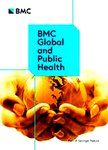版权所有:内蒙古大学图书馆 技术提供:维普资讯• 智图
内蒙古自治区呼和浩特市赛罕区大学西街235号 邮编: 010021

作者机构:Department of Health Informatics and Data Science Loyola University Chicago Health Sciences Campus Maywood IL USA. iozodiegwu@luc.edu. Department of Preventive Medicine and Institute for Global Health Northwestern University Chicago IL USA. iozodiegwu@luc.edu. Department of Health Informatics and Data Science Loyola University Chicago Health Sciences Campus Maywood IL USA. lmhlanga@luc.edu. Department of Health Informatics and Data Science Loyola University Chicago Health Sciences Campus Maywood IL USA. Epidemiology and Biostatistics Research Unit Institute for Advanced Medical Research and Training (IAMRAT) College of Medicine University of Ibadan Ibadan Oyo Nigeria. Department of Epidemiology and Medical Statistics Faculty of Public Health College of Medicine University of Ibadan Ibadan Oyo Nigeria. National Malaria Elimination Programme Abuja Nigeria. Department of Public Health College of Health Sciences Bowen University Iwo Osun Nigeria. Global Malaria Programme World Health Organization Geneva Switzerland.
出 版 物:《BMC global and public health》
年 卷 期:2025年第3卷第1期
页 面:11页
主 题:Bed nets De-prioritization LLINs Malaria Reprioritization
摘 要:BACKGROUND:Malaria continues to be a major cause of illness and death worldwide, particularly affecting children under the age of five and those living in high-burden countries like Nigeria. Long-lasting insecticidal nets (LLINs) are one of the effective interventions for malaria control and prevention. In response to funding constraints in the Global Fund Grant Cycle 7, Nigeria s National Malaria Elimination Programme (NMEP) aimed to develop an approach that maximizes the impact of limited malaria interventions by focusing on areas with the greatest need. We developed an urban LLINs distribution framework and a novel strategy, which was piloted in Ilorin, the capital of Kwara State. METHODS:A participatory action research approach, combined with abductive inquiry, was employed to co-design a framework for guiding bed net distribution. The final framework consisted of three phases: planning, data review and co-decision-making, and implementation. During the framework s operationalization, malaria risk scores were computed at the ward level using four key variables, including malaria case data and environmental factors, and subsequently mapped. A multistakeholder dialogue facilitated the selection of the final malaria risk maps. Additionally, data from an ongoing study were analyzed to determine whether local definitions of formal, informal, and slum settlements could inform community-level stratification of malaria risk in cities. RESULTS:Akanbi 4, a ward located in Ilorin South and Are 2, a ward in Ilorin East consistently had lower risk scores, a finding corroborated during the multistakeholder dialogue. A map combining malaria test positivity rates among children under five and the proportion of poor settlements was identified as the most accurate depiction of ward-level malaria risk. Malaria prevalence varied significantly across the categories of formal, informal, and slum settlements, resulting in specific definitions developed for Ilorin. Thirteen communities